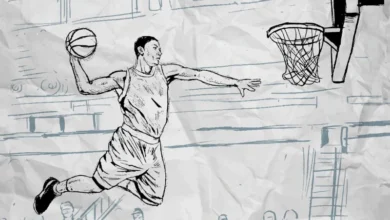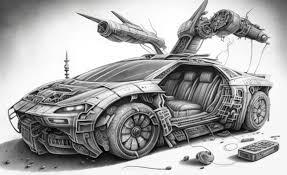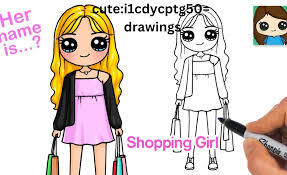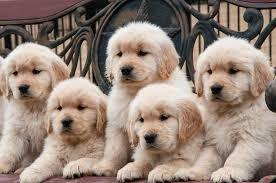From Kawaii to Fierce: The Evolution of cute:jwpq3tudfrw= pokemon

Introduction to the concept of cute:jwpq3tudfrw= pokemon
Pokémon has captured the hearts of millions around the globe, transforming from a simple video game into a cultural phenomenon. Among its many charms lies a unique concept that blends endearing cuteness with fierce designs—a juxtaposition that keeps fans coming back for more. The evolution of cute Pokémon is not just an aesthetic journey; it’s a reflection of changing societal trends and cultural influences. As we delve deep into this captivating realm, we’ll explore how Kawaii culture in Japan played a pivotal role, the fan reactions to these transformations, and what it all means for Pokémon’s future. Buckle up as we navigate this colorful landscape where adorable meets audacious!
The rise of Kawaii culture in Japan
Kawaii culture emerged in Japan during the 1970s, blossoming into a vibrant phenomenon. It celebrates everything adorable, playful, and innocent. From fashion to art, it permeates various aspects of Japanese life.
Characterized by pastel colors and childlike aesthetics, Kawaii became a way for people to express joy and whimsy. Young girls began adopting this style through clothing adorned with cute characters like Hello Kitty.
As the years progressed, Kawaii evolved beyond just fashion. It influenced anime, video games, and even food presentations—transforming mundane items into delightful treats that brought smiles.
This cultural embrace of cuteness resonated globally. People from different backgrounds began to appreciate its charm. The world started recognizing how something as simple as a cute character could evoke happiness and nostalgia.
In essence, Kawaii culture laid the groundwork for what would later shape the beloved Pokémon franchise—a fusion of innocence combined with unexpected fierceness.
The influence of cute:jwpq3tudfrw= pokemon
Cute Pokémon have left an indelible mark on pop culture. Their charming designs and delightful antics captivate fans of all ages. Characters like Pikachu and Jigglypuff embody the essence of this aesthetic.
These adorable creatures have sparked a massive wave of merchandise. Plush toys, clothing lines, and accessories featuring them flood the market. It’s not just kids; adults embrace this playful side too.
The success extends beyond products into art and media. Fan creations often showcase these cute characters in various styles, infusing creativity within communities worldwide.
Moreover, cute Pokémon play a significant role in marketing strategies for games and shows. Their appeal draws in newcomers while retaining long-time enthusiasts eager to catch ’em all with that kawaii flair.
This influence shapes how Pokémon is perceived globally, merging innocence with adventure in an ever-expanding universe filled with imagination.
The introduction of
The introduction of new Pokémon has always been a cornerstone of the franchise. Each generation brings fresh characters, showcasing various themes and designs. This evolution reflects broader cultural trends while maintaining ties to its roots.
With recent titles, we’ve seen a shift towards more diverse aesthetics. From fierce warriors wielding powerful abilities to whimsical creatures that charm with their quirks, there’s something for every player.
This expansion helps cater to an increasingly diverse fanbase who seek different experiences within the game universe. The contrast between cute and fierce can evoke strong emotions, drawing in those who may prefer one style over another.
Gamers often find themselves attached not just through gameplay mechanics but through character design and concept as well. These introductions keep the community buzzing with excitement, speculation, and creativity as they explore the endless possibilities within each new release.
Fan reactions and controversy surrounding the evolution of cute in Pokemon
The evolution of cute Pokémon has sparked a diverse range of fan reactions. Some players embrace the shift, celebrating fierce designs that showcase strength and agility. They argue that these new aesthetics reflect a more mature direction for the franchise.
Conversely, long-time fans often express nostalgia for earlier generations. For them, the charm of adorably round characters holds sentimental value. The introduction of edgier creatures can feel like a departure from what made Pokémon special in the first place.
Controversy brews online as debates unfold across social media platforms. Forums buzz with passionate discussions about art styles and character traits. Is there room for both kawaii and fierce?
This divide highlights how deeply connected fans are to their favorite pocket monsters—each design choice carries weight far beyond mere graphics or gameplay mechanics.
How the evolution has impacted the popularity and success of the franchise
The evolution of cute: jwpq3tudfrw= Pokémon has been a game changer for the franchise. As new designs emerged, they brought fresh characters that appealed to diverse audiences. Fans were drawn not just to nostalgia but also to innovative styles.
With each generation, developers pushed boundaries. The shift from adorably chubby critters to more fierce and dynamic forms added depth to gameplay. This variety keeps trainers engaged and excited about discovering what’s next.
Merchandising skyrocketed as well. Characters like Gardevoir or Lucario blended cuteness with coolness, creating collectibles that appeal across age groups. Stores filled shelves with plush toys and action figures featuring both sides of this evolving aesthetic.
Adapting these themes into media—games, shows, movies—has fortified fan loyalty while attracting newcomers looking for something unique in the franchise landscape.
Conclusion: What’s next for Pokemon and its evolving definition of
As we look ahead, the evolution of cute in cute:jwpq3tudfrw= pokemon seems poised for more exciting transformations. The franchise has shown a remarkable ability to adapt and innovate, blending Kawaii charm with fierce elements to appeal to both new fans and long-time enthusiasts.
With the introduction of darker themes and more complex character designs, there is potential for further exploration into what constitutes “cute.” It will be interesting to see how designers balance this evolving aesthetic while maintaining the core essence that first captured hearts around the globe.
The future may bring even bolder choices as Pokémon continues its journey through various media platforms. How will upcoming games or shows redefine these beloved creatures? Will they embrace a fiercer persona without losing touch with their roots?
Fans are eager for what’s next, ready to embrace whatever direction this iconic brand takes. The fusion of cute and fierce could lead us down uncharted paths, expanding our understanding of aesthetics within the Pokémon universe. One thing is certain: as long as creativity thrives in this vibrant world, there’s always something fresh on the horizon.





